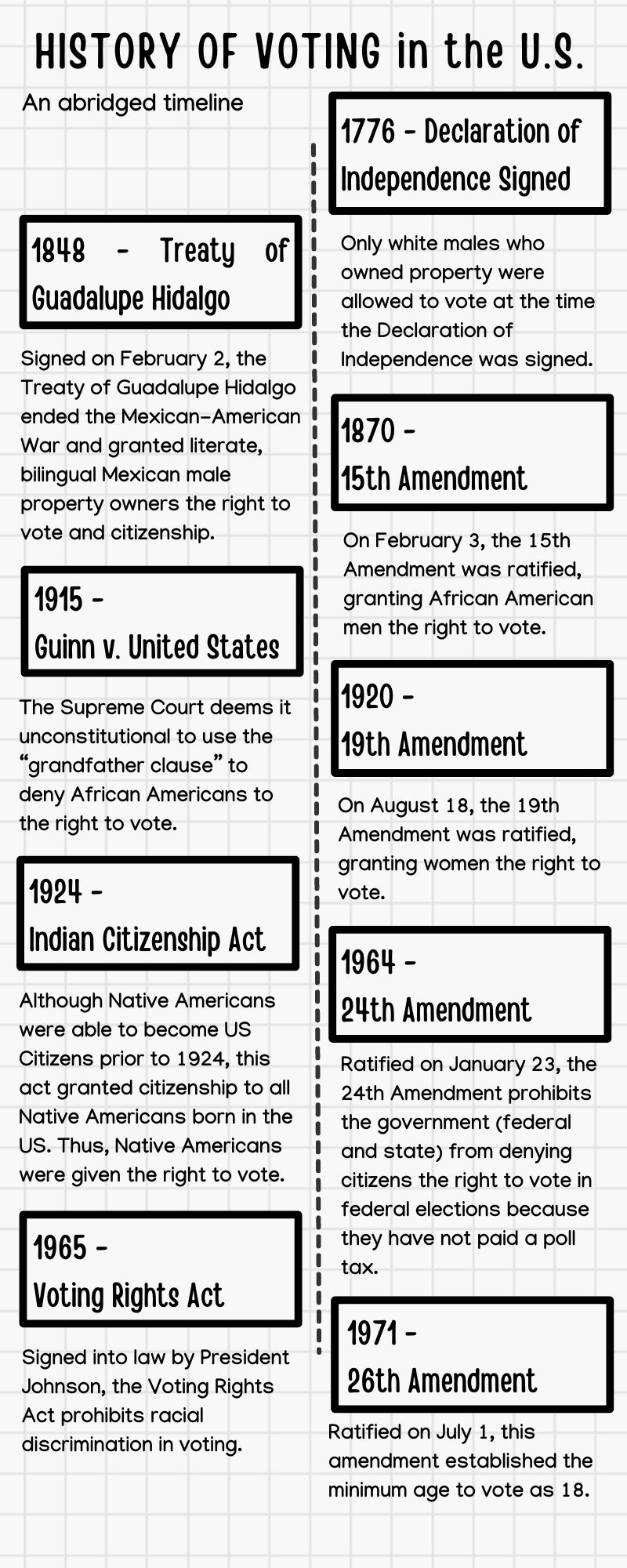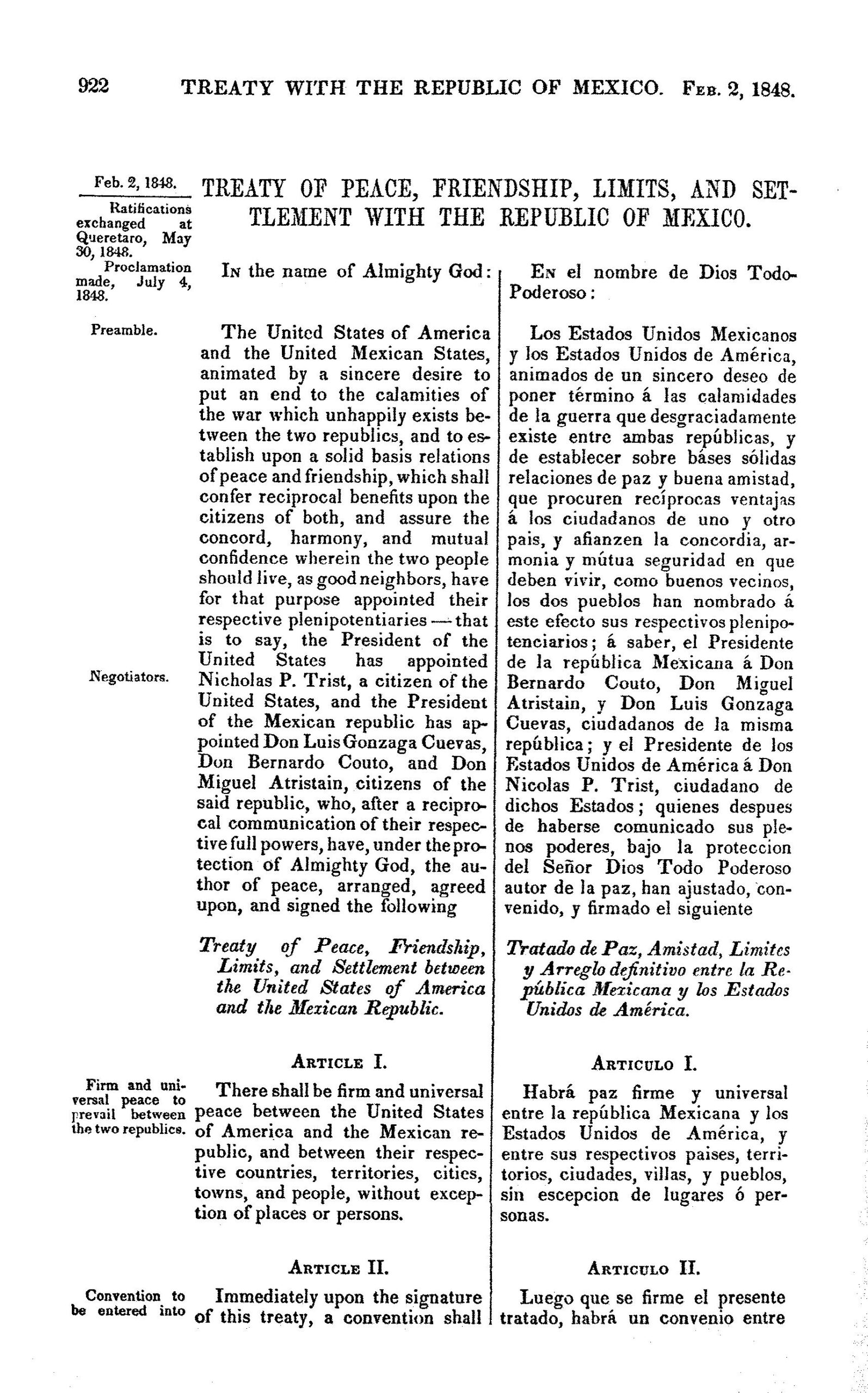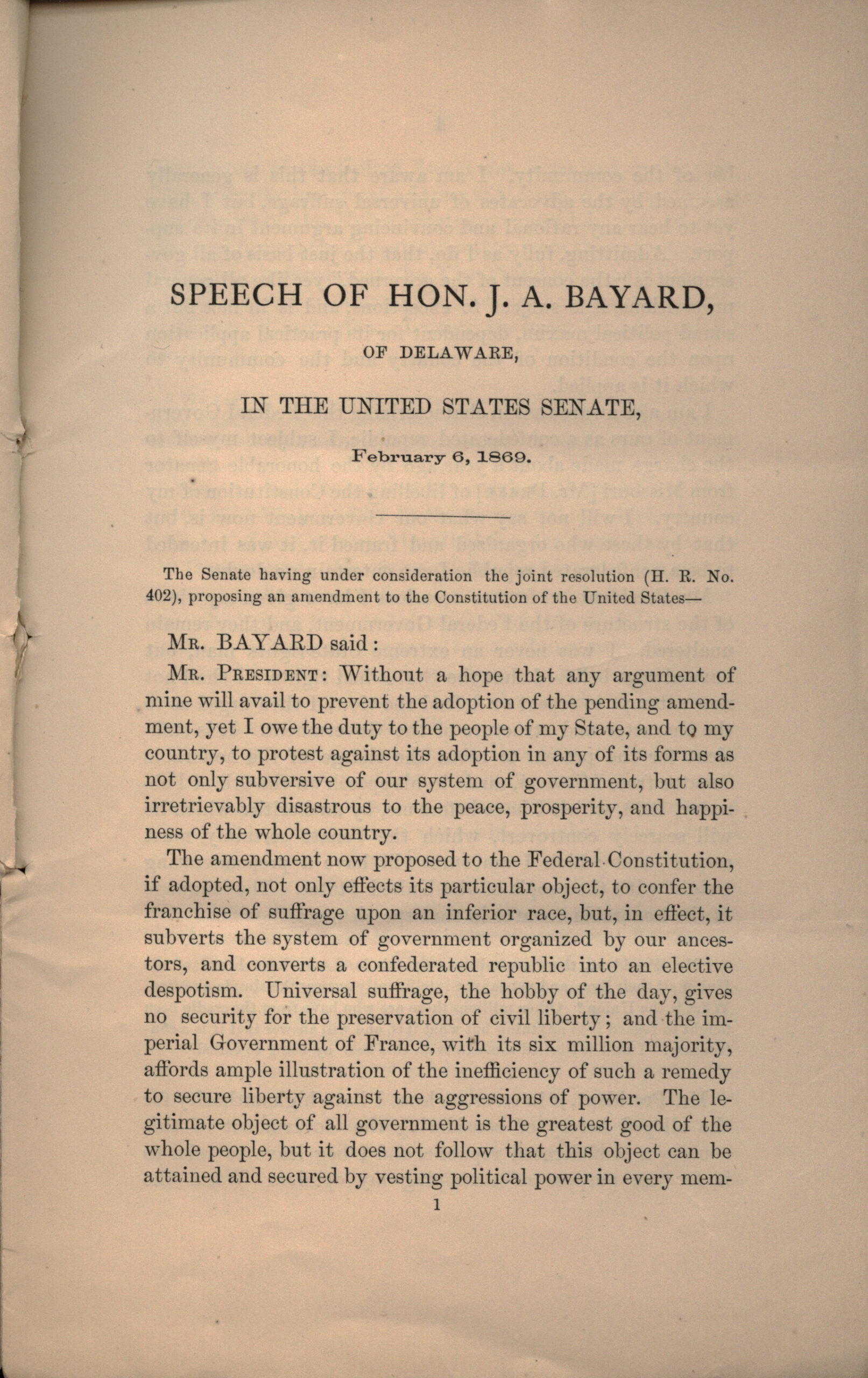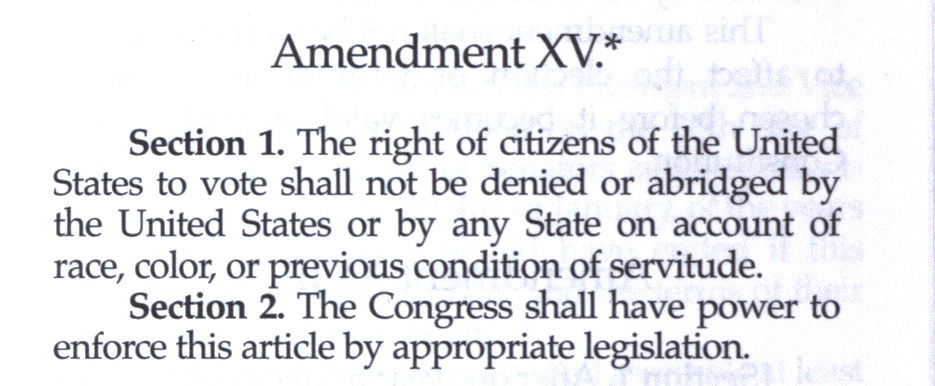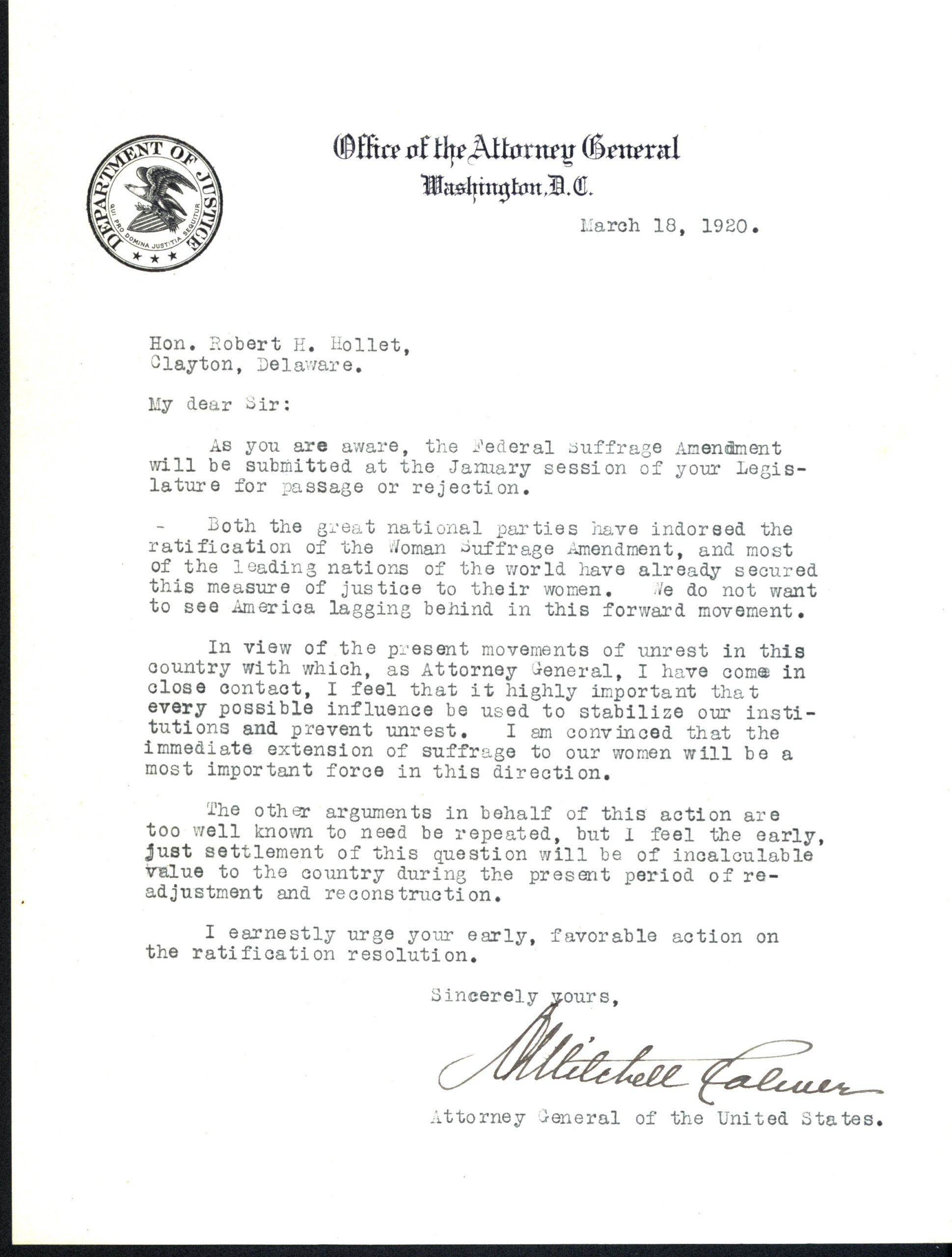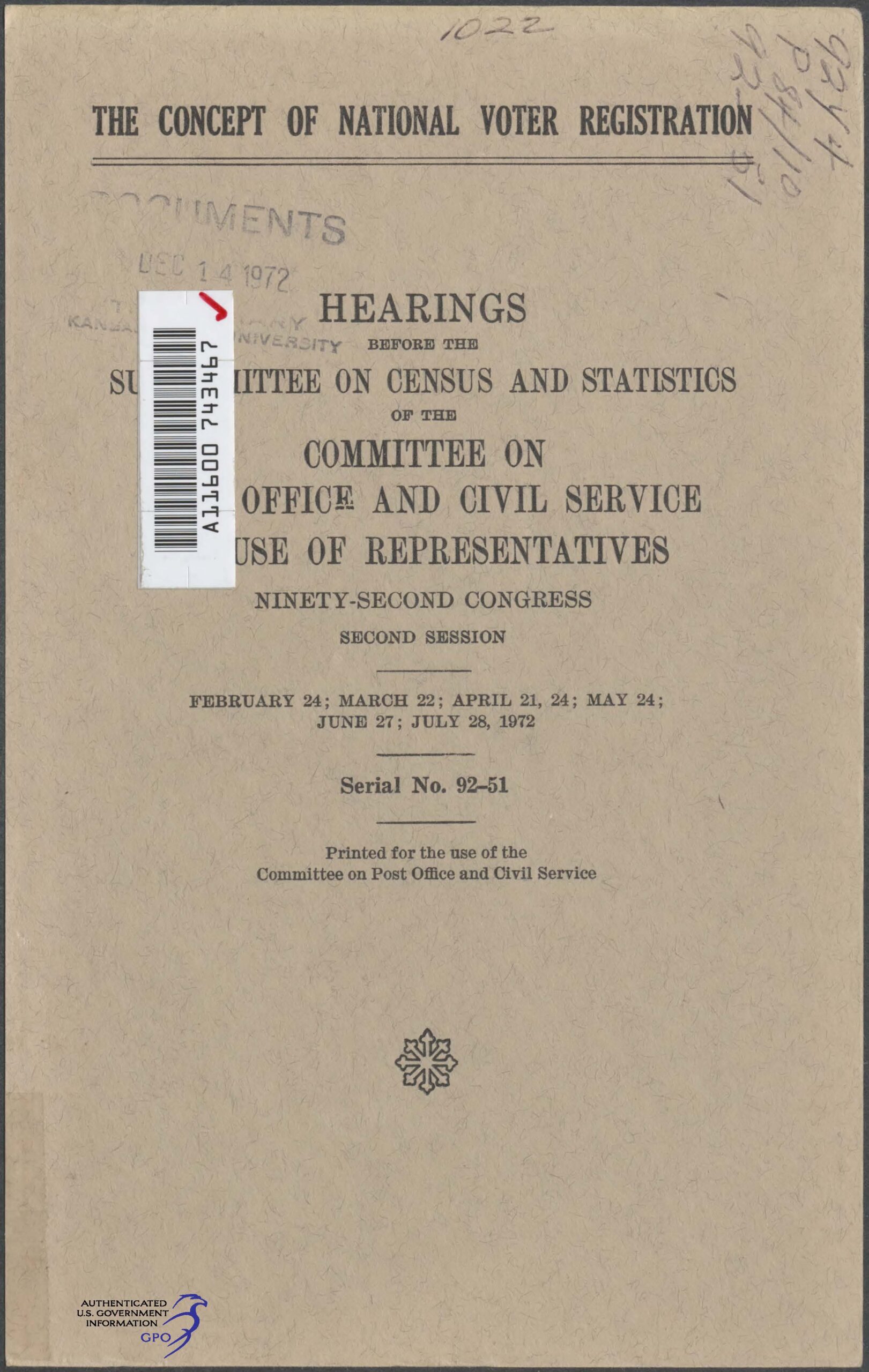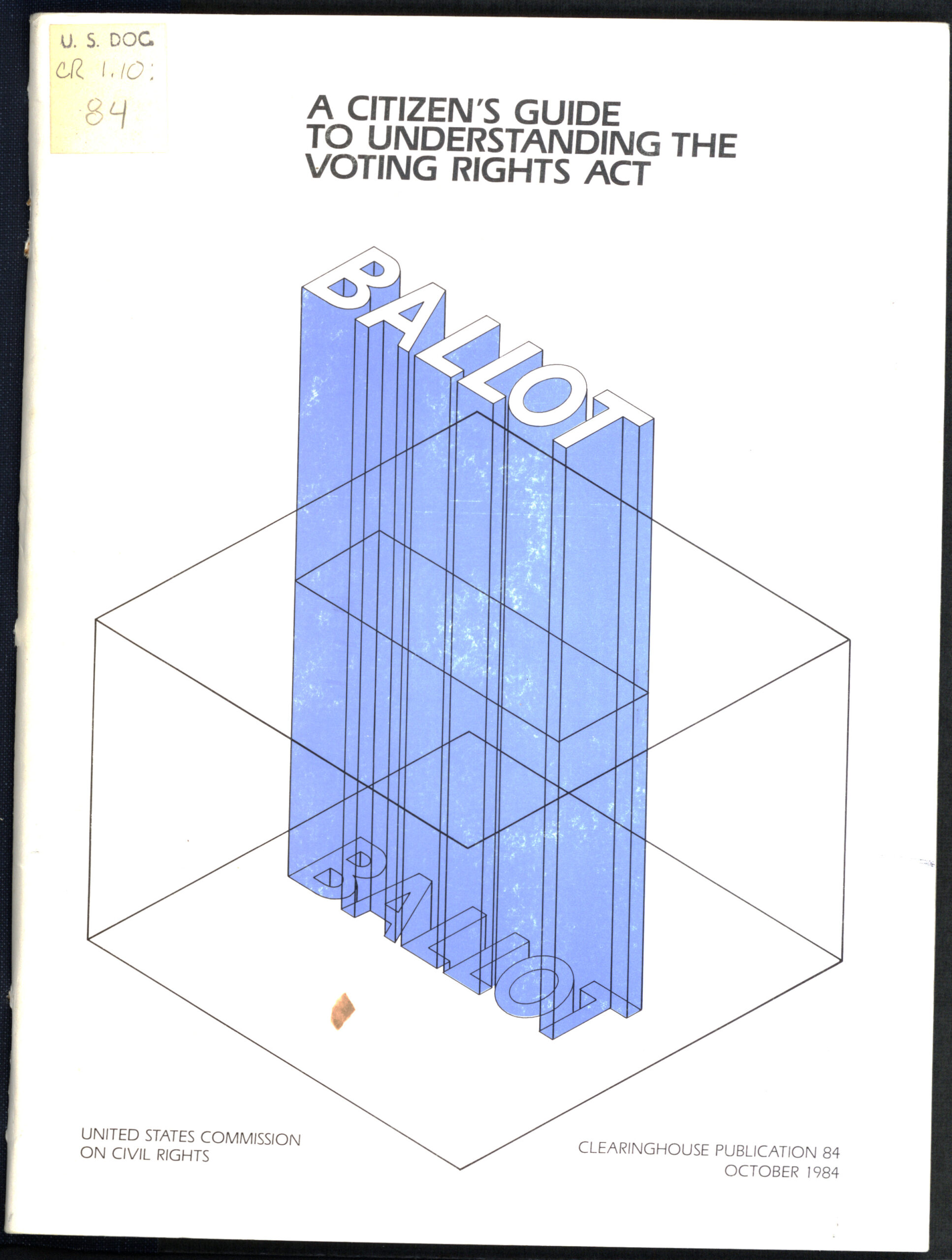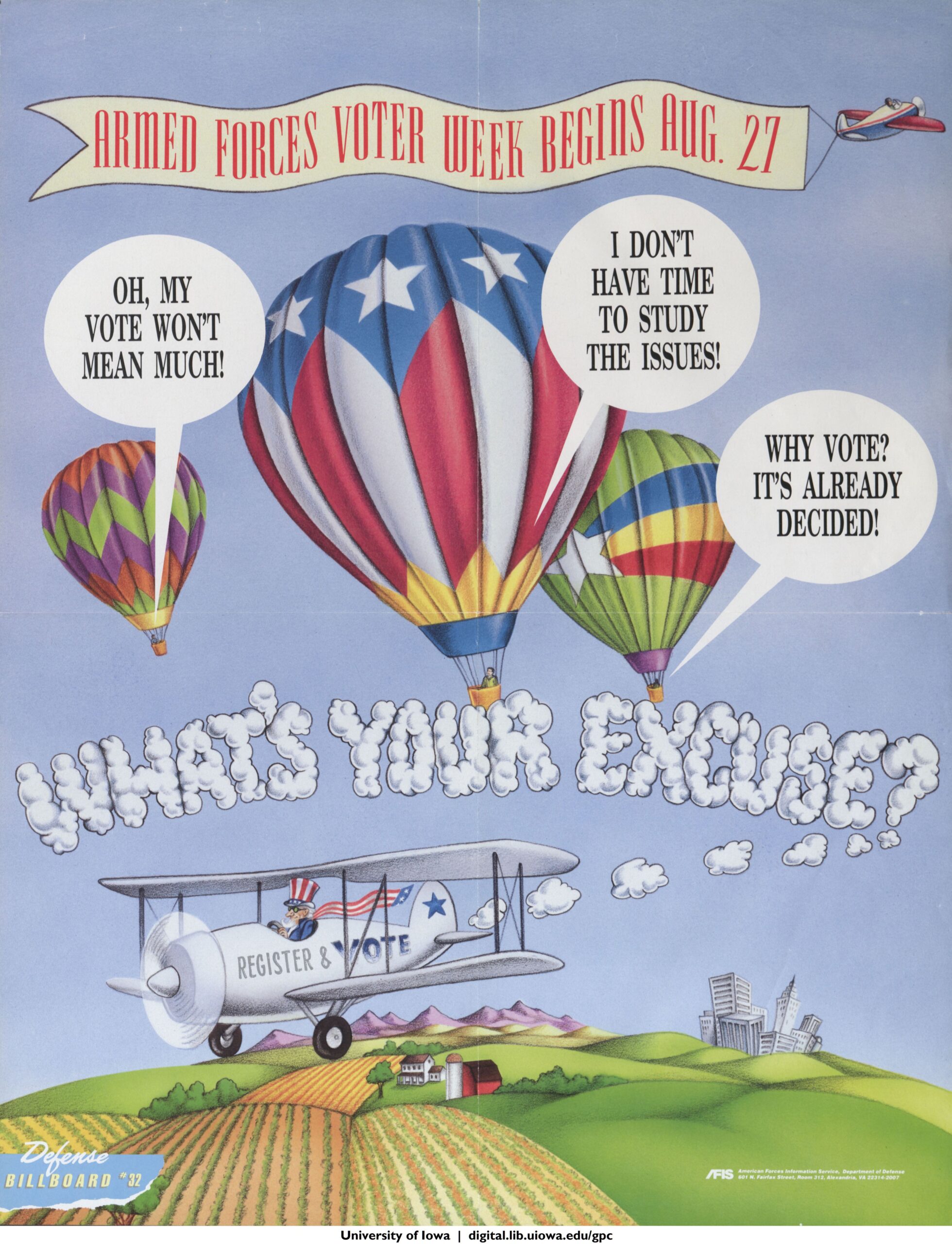“The Stakes are Too High…”
“Governments are instituted among Men, deriving their just powers from the consent of the governed.” These words from the Declaration of Independence espouse the importance of elected government. But who of “the governed” has the right to give their consent, or vote? From a small minority of property-owning white men to most Americans over eighteen, the fight to access the ballot box has been long and hard, requiring the energy and support of citizens and the government to bring ever larger segments of the population into the electorate.
The timeline below are important dates in United States history where certain populations were granted the right to vote.
The Treaty of Guadalupe Hidalgo ended the Mexican-American War. Among its provisions, the treaty granted citizenship (and by extension the right to vote) to Mexicans who chose to stay in the newly acquired United States territory. To view the full treaty online, click this link.
After the Civil War, three amendments were added to the United States Constitution to integrate African Americans into United States civic life: the abolition of slavery (13th Amendment), granting citizenship to all native-born people, including African Americans (14th Amendment), and to grant enfranchisement, the right to vote, to African American men (15th Amendment). While the 15th Amendment passed, numerous members of Congress were against extending this right, including Delaware Senator James A. Bayard. He delivered this speech during the Senate’s debate on the amendment.
U. S. Attorney General Robert Palmer wrote to Kent County State Senator Robert Hollet encouraging him to vote in favor of ratifying the 19th amendment. Delaware could have been the 36th state to ratify the proposed amendment, extending the right to vote to women, which would have enacted the amendment. However, it was rejected by the legislature on June 2, 1920. This allowed Tennessee to become the ratification state instead. Delaware later ratified the amendment in 1923.
After the passage of the Voting Rights Act in 1965, Congress considered creating a national voter registration system. The United States House of Representatives held a series of hearings on the proposed system. The third hearing, held in Tucson, Arizona, saw members of the committee questioning Arizona election officials on Native American and Latinx voter participation and ballot access. To access the entire hearing, follow this link. Some language might be harmful or derogatory.
Some of the same challenges persist today when it comes to accessing the polls. Americans can live extremely far from their polling location and might not have reliable transportation to get there, others might not have time off work, or missed voter registration deadlines. This is an oversimplification of the ongoing issues related to voting in the United States. Many voters still encounter obstacles such as gerrymandering, voter suppression, and lack of interest in politics (see our Civic Education page to learn more why you should vote). However, each election cycle many people from the Department of Elections (and other non-profit organizations) work to ensure that information about how vote is widely available and as many obstacles to the polls are removed for Americans as possible. They also ensure that we have a safe and fair election.
The Voting Rights Act of 1965 prohibited racial discrimination in voting, paving the way for full enfranchisement for all African Americans. This report explains key provisions in the Voting Rights Act of 1965 and its 1982 amendments. It provides other information to “help minority citizens understand their rights… so that they can participate fully in the American political process” (pg. 2).
This is a bill proposed in the United States Congress to expand voter registration opportunities across the country, including requiring states to provide voter registration applications as part of a driver’s license application. A final version of this legislation was enacted as the National Voter Registration Act of 1993, also known as the as the “Motor Voter Act.”
This poster was used as part of a campaign by the Department of Defense to encourage members of the military to register and vote in U.S. elections.
Additional Resources:

